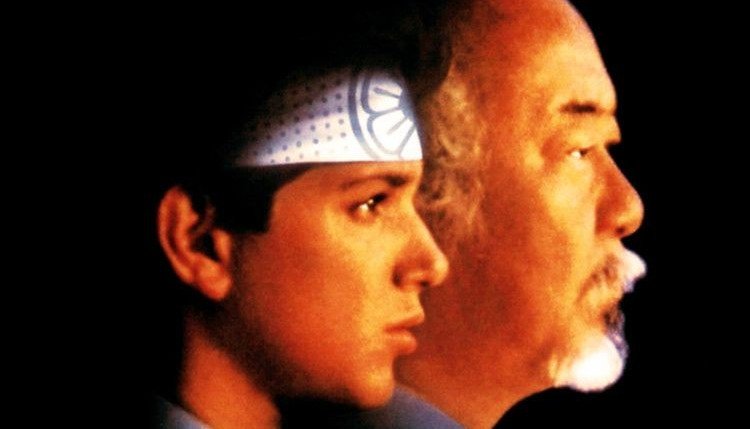Franchise Rewind: The Karate Kid (1984) The Karate Kid, Part II (1986)
The Karate Kid, 1984 (Ralph Macchio) Columbia Pictures
The Karate Kid, Part II, 1986 (Noriyuki “Pat” Morita) Columbia Pictures
“Man who catch fly with chopstick accomplish anything.”
Let’s speculate that Rocky was made for a different generation than my own. It’s still a movie anybody can love and appreciate, but if a similar movie (with a similar theme) could be made with a younger cast at a time when kids of my generation were coming of age (the “Brat Pack” years), it might bridge that gap in crossover appeal between parents and their children. My mother loved this movie, as did I, but we also enjoyed Rocky.
The Karate Kid was the Rocky of our generation, just as WarGames was the Dr. Strangelove of our generation. It’s not a coincidence that both Rocky and The Karate Kid were directed by John G. Avildsen with a similarly stirring score by Bill Conti. I had bullies when I was a kid. They weren’t the bizarre super-bullies of this movie, with their kicks and their spins. I love the idea of a group of these karate-jerks all swarming on little Ralph Macchio for no other reason than to demonstrate their dominance. I can’t believe they have personal grudges against Johnny Cade.
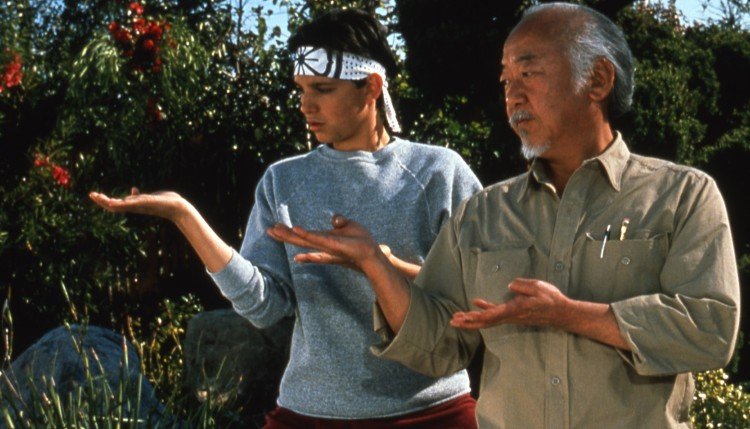
He and his mother (Randee Heller) have just arrived in sunny California from Newark and are looking to start a new life, but Macchio’s Daniel LaRusso routinely gets his ass handed to him by the karate-jerks, led by Johnny Lawrence (William Zabka) under the tutilege of the evil Emperor Palpatine-type John Kreese (Martin Kove). Later, Daniel is hog piled yet again until his apartment complex super, Mr. Miyagi, shows up and kicks all of their asses single-handedly.
Impressed, Daniel asks Miyagi to train him in martial arts. Miyagi builds up Daniel’s discipline by making him do rote chores, such as sanding his deck, waxing his car, and painting his fences. After a while, Daniel starts to think he’s being exploited, until Myagi (ingenious, really) demonstrates that Daniel has actually been conditioning himself to fight using the same methods he would use to sand the floor, wax-on-wax-off, and “paint the fence.”
After a couple of necessary ’80s montages, Daniel becomes a “Rocky machine!” But this isn’t Rocky. This is an ’80s movie, and it was required for the lead character to win, to always win, to take no prisoners, to never surrender. He even gets the girl (Elisabeth Shue) who is way out of his league. I remember my Mother was positively scandalized by their kissing scene. She was pointing at the screen and saying, “They’re kissing like adults! They’re not kissing like awkward teens!” I learned a little bit about authenticity in film from this outburst.
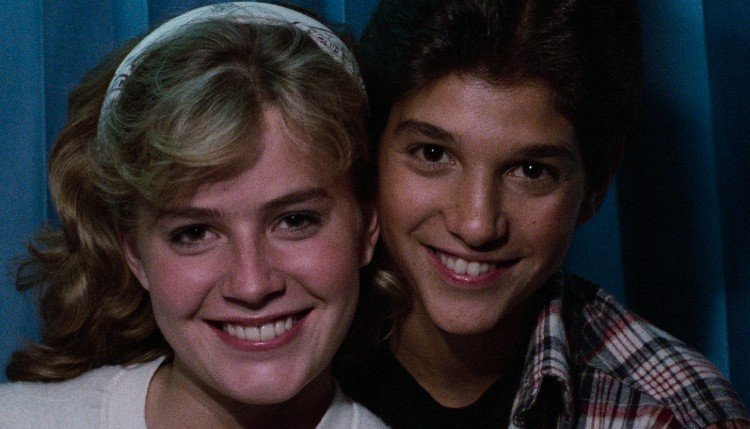
Another phenomena of ’80s filmmaking was the elemental force of coincidence. This is when a character undergoes a metamorphosis that will require him/her to use a newly-adopted power against the antagonist that has been terrorizing that character over the last hour and a half of the movie’s running time. Miyagi trains Daniel in karate and Daniel uses what he has learned in the karate championship against the bullies trained by Emperor Palpatine! Now that’s a coincidence. In the end, all the fruit lines up for Daniel. He gets the trifecta: the girl, the championship, and sweet, sweet revenge. This is emblematic of the “Me” generation. Still, it’s a very satisfying ending for a wonderful movie.
“When my father died, I spent a lot of time thinking I hadn’t been such a great son. It seemed to me like I could have listened a little more, spent a little more time with him together… I felt so guilty, you know, like he did everything for me and I didn’t do anything for him. Then one day I realized… that I did the greatest thing I ever did for him before he died: I was there with him… and I held his hand… and said goodbye.”
Because of the unexpected success of the first Karate Kid movie, it was inevitable that a franchise would start, and director John G. Avildsen wasn’t about to let this opportunity get away as he had with Rocky. The trouble with Rocky was in dealing with the enormous talent, ego, and ambition of screenwriter/actor Sylvester Stallone who would shortly take over directing duties for the three sequels that followed.
Avildsen was a film director who weathered a lot of crazy storms. He survived in the industry because he adapted. The Karate Kid is a different beast. It plays with the same rhythm in each movie but, unlike the Rocky series, slightly alters the formula. It does engage in the same time-travel narrative. The opening titles feature scenes from the first movie and take up about five minutes of screen time. This movie was released two years after the first movie. Did we forget that quickly?
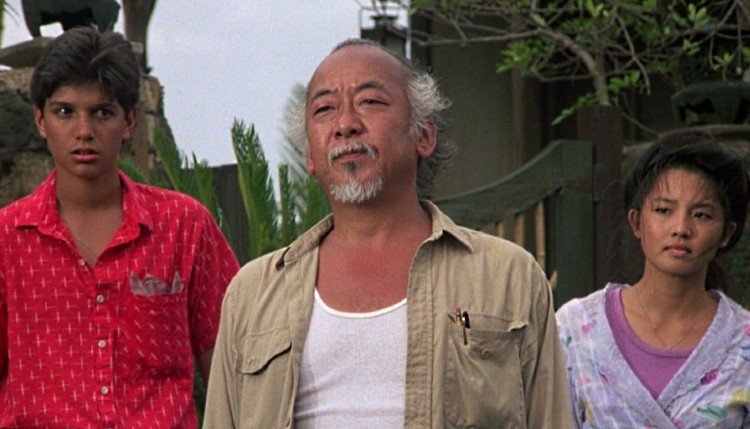
This first sequel begins minutes after the first movie ends with the triumphant victory of Daniel LaRusso. Emperor Palpatine is so angry at his Head Bully student he beats him mercilessly in the parking lot until Mr. Miyagi comes to his defense. We jump forward six months (still time traveling, which means 1984 lasted 18 months) and a semi-reset in that Daniel no longer has a girlfriend. We do see an enormous mane of curly blonde hair hugging Daniel after his victory. I guess Ali’s rich family threatened to kill her pony or whatever. In fact, nobody’s around except for Mr. Miyagi.
There was a scene in the first movie in which Miyagi gets himself good and toasted on the anniversary of his wife and child’s death at an internment camp. We get a little backstory into Miyagi and this is one of the scenes that would earn Pat Morita an Oscar nomination. In the sequel, Miyagi receives a letter from Okinawa informing him that his father is gravely ill. Daniel decides to join him on his sojourn back to his native land: Hawaii! I mean Okinawa, but Okinawa looks an awful lot like Hawaii. It’s “Movie-Japan!”
There is a little bit of As Okinawa Turns melodrama. A young Miyagi dug this chick, Yukie (Nobu McCarthy) who was dug by this other guy, Miyagi’s rival Sato (Danny Kamekona), and even though these guys are now collecting Social Security, they still have a grudge, and Sato wants to duke it out with our boy. Dames is trouble! They’re also awesome, as embodied by gorgeous young Tamlyn Tomita (in her debut) as Kumiko, Yukie’s niece. She dreams of being a dancer. Damnit Tamlyn – be a dancer! I know you can do it, baby!
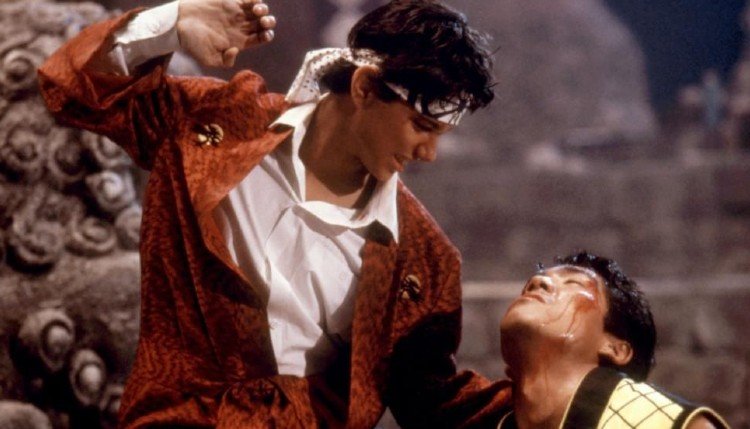
There’s a really cute scene where she makes Daniel some tea. We have a role-reversal here. Daniel-San becomes Miyagi’s confidante (and mentor, in a way). There’s a wonderful bit here where he comforts Miyagi after his father’s passing. That’s really what these movies are about. They’re not about karate and karate championships and sweet, sweet revenge. They’re about the bond between a young man and an old man, and the complexities of both.
The Karate Kid, Part II had only a slightly higher production budget and was still an enormous hit for Columbia Pictures. If there’s one thing … one thing … I don’t absolutely love about The Karate Kid, Part II, it’s the Peter Cetera song, “Glory of Love,” (originally written for Rocky IV) which played nonstop on top 40 all through the summer, fall, and winter of 1986. It’s one of catchiest, virus-like pop songs of all time. The song is a disease meant to infect the listener. I started writing a novel a few years back (I never finished it) which I titled, Pop Song Eats The World. I think this was the song. If I had a favorite Chicago/Peter Cetera song, it would probably be “Stay The Night,” just because the video is so awesome. Check it out some time. You’ll be glad you did!

